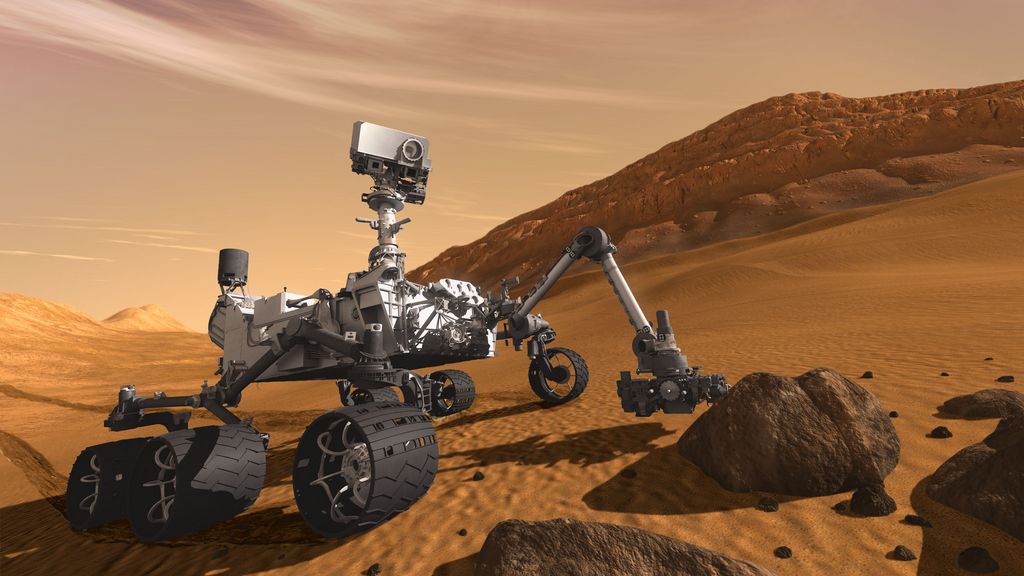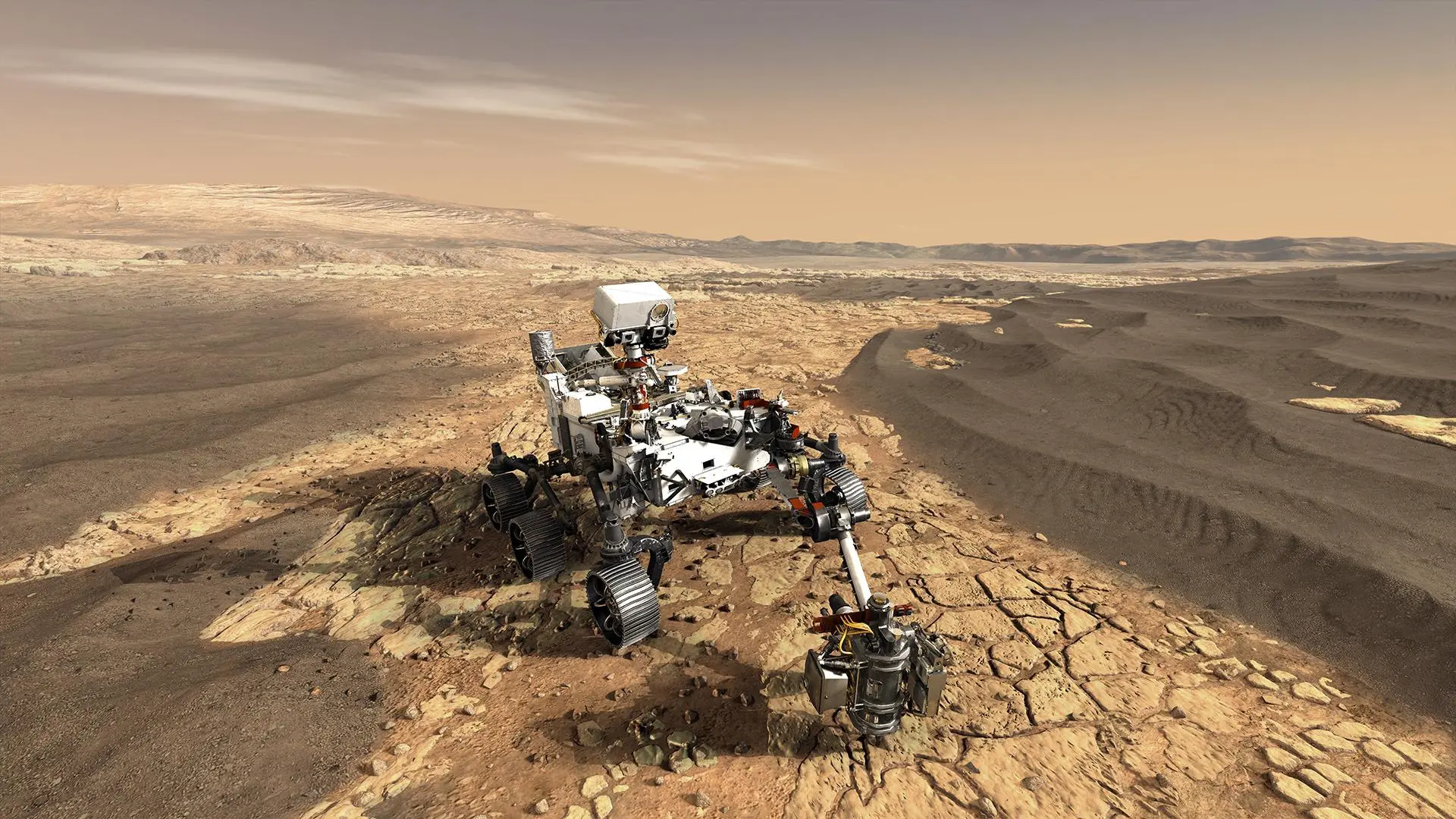Introduction
In the vast expanse of our solar system, Mars has become a focal point for exploration and discovery. The Red Planet’s allure is not just in its potential for past or present life, but also in the challenges it presents for space exploration. As we advance into 2024, Artificial Intelligence (AI) is playing an increasingly pivotal role in Mars rover missions, revolutionizing how we explore, understand, and interact with Mars. This article delves into how AI is transforming Mars rover missions, the technologies driving these innovations, and the future implications for space exploration.
The Evolution of Mars Rover Missions
Mars rover missions have come a long way since the early days of space exploration. From the first successful landing of the Viking 1 in 1976 to the more recent Perseverance rover, each mission has expanded our understanding of Mars. These rovers have provided invaluable data, from detailed surface maps to evidence of water in the planet’s past. As technology has evolved, so too have the capabilities of these rovers, with AI emerging as a key driver of this evolution.
The Integration of AI in Mars Rover Missions
AI is transforming Mars rover missions by enhancing autonomous operations, improving data analysis, and enabling more sophisticated scientific experiments. Here’s a closer look at the key areas where AI is making a difference:
- Autonomous Navigation and Decision-Making
One of the most significant challenges in Mars exploration is the planet’s harsh and unpredictable environment. Mars rovers must navigate complex terrain, including rocks, dunes, and craters, without real-time control from Earth due to the communication delay. AI algorithms enable rovers to make autonomous decisions about navigation and obstacle avoidance. For instance, the Perseverance rover employs AI-driven systems to analyze images of the terrain and select safe paths for travel, drastically improving the efficiency and safety of exploration.
- Enhanced Data Processing and Analysis
Mars rovers are equipped with a variety of scientific instruments that collect vast amounts of data. AI plays a crucial role in processing and analyzing this data. Machine learning algorithms can sift through enormous datasets to identify patterns and anomalies that might not be immediately apparent to human scientists. This capability is especially useful for identifying potential sites of interest, such as areas with signs of past microbial life or unusual geological formations.
- Advanced Image Recognition
AI-powered image recognition technologies are used to analyze the Martian landscape. These technologies can classify and categorize objects in the rover’s images, such as rocks and soil samples, with high accuracy. By automating the image analysis process, AI allows scientists to focus on interpreting the results rather than manually examining each image. This advancement accelerates the pace of discovery and enhances the overall efficiency of the mission.
- Predictive Maintenance and Health Monitoring

Mars rovers are subjected to extreme conditions, which can lead to mechanical issues over time. AI is employed to monitor the health of rover systems and predict potential failures before they occur. By analyzing data from various sensors, AI algorithms can detect early signs of wear and tear, allowing for preemptive maintenance and reducing the risk of mission failure.
- Scientific Experimentation and Analysis
AI enhances the rovers’ ability to conduct scientific experiments. For example, AI-driven systems can optimize the use of onboard instruments, such as spectrometers and drills, to analyze Martian soil and rock samples. By adjusting parameters in real time based on the data being collected, AI ensures that experiments are conducted with maximum precision and relevance.
Notable AI-Driven Mars Rover Missions
Several notable Mars rover missions have leveraged AI technologies to achieve their goals:
- Curiosity Rover (2012-Present): Curiosity has been a trailblazer in integrating AI with autonomous navigation and scientific analysis. Its ability to independently select and prioritize scientific targets has provided valuable insights into Mars’ geology and climate.
- Perseverance Rover (2021-Present): Perseverance represents the latest advancements in AI-driven Mars exploration. Its sophisticated AI systems support autonomous navigation, detailed terrain analysis, and advanced scientific experimentation. The rover’s AI capabilities are instrumental in its mission to search for signs of past life and collect samples for future return missions.
The Future of AI in Mars Exploration
As we look to the future, AI is set to play an even more significant role in Mars exploration. Upcoming missions and projects are expected to benefit from advances in AI technologies, including:
- More Advanced Autonomous Systems: Future rovers will likely feature even more advanced autonomous systems, enabling them to navigate more complex terrains and make more sophisticated decisions on their own.
- Enhanced Data Analysis Capabilities: AI will continue to evolve, providing more powerful tools for analyzing Martian data. This will lead to faster and more accurate discoveries, pushing the boundaries of our understanding of Mars.
- Collaboration with Human Missions: As plans for human missions to Mars develop, AI will be crucial in supporting and enhancing these missions. AI systems could assist astronauts in real-time decision-making, health monitoring, and habitat management.
Conclusion
The integration of AI in Mars rover missions represents a transformative leap in space exploration. By enhancing autonomous operations, improving data analysis, and enabling advanced scientific experiments, AI is driving the success of Mars exploration in 2024 and beyond. As technology continues to advance, AI will undoubtedly play an even more pivotal role in unraveling the mysteries of the Red Planet, bringing us closer to understanding our celestial neighbor and its potential for future human exploration.


